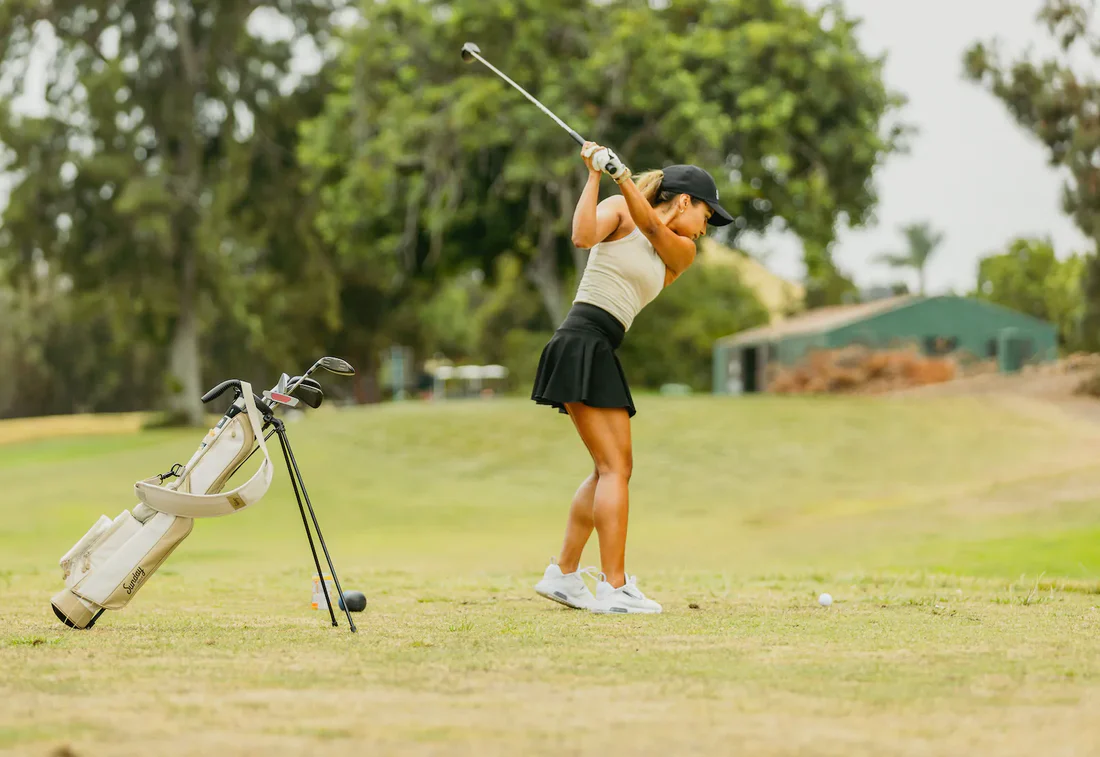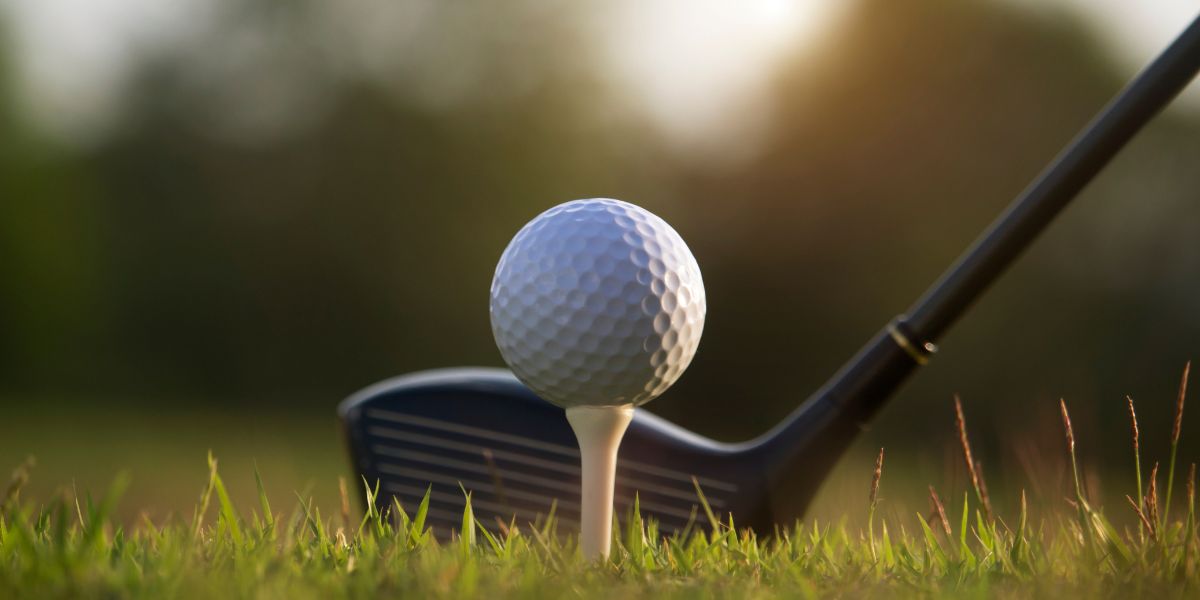Long shots define scoring opportunities in golf. Players who can strike consistent long approaches or reach par-5s in two always gain a competitive advantage. This detailed guide explains which golf clubs for long shots deliver maximum distance, control, and precision.

1. Understanding Long Shots in Golf
Long shots represent strokes exceeding 180 yards for amateurs and above 220 yards for advanced players. These shots connect the tee or fairway with greenside zones. They require clubs engineered for higher ball speeds, optimized launch, and ideal spin rates.
Distance alone does not make a shot effective. Trajectory, forgiveness, and gapping consistency define usable distance. Correct club choice ensures the ball lands with the proper carry, rollout, and direction stability.
2. Primary Categories of Golf Clubs for Long Shots
2.1 Fairway Woods
Fairway woods rank as the traditional long-shot weapons. Designed with larger clubheads and shallower faces, they deliver powerful strikes from tee or fairway.
Key features of fairway woods:
-
Loft range: 13°–21° (3-wood to 7-wood).
-
Shaft length: 42–43 inches.
-
Optimal use: tee box or fairway lies.
-
Material composition: titanium or maraging steel faces for rebound velocity.
Fairway woods produce high launch angles with balanced spin. Modern designs such as TaylorMade Qi10, Callaway Paradym TD, and Titleist GT3 integrate adjustable weighting to fine-tune flight patterns.
2.2 Hybrids
Hybrids, also called rescue clubs, blend wood-like faces with iron-like shafts. Their lower center of gravity (CG) allows easier launch even from rough or uneven terrain.
Key hybrid characteristics:
-
Loft range: 17°–28°.
-
Shaft length: 39–41 inches.
-
Typical use: long approaches or second shots from variable lies.
-
Advantage: higher forgiveness and ease of strike versus long irons.
Hybrids like the Ping G430, Cobra Darkspeed X, and Mizuno CLK maintain consistent carry with minimal spin loss, ideal for moderate-speed golfers.
2.3 Utility or Driving Irons
Utility irons bridge the gap between hybrids and traditional long irons. They produce flatter, penetrating trajectories.
Key attributes:
-
Loft range: 16°–22°.
-
Shaft length: 38–39 inches.
-
Material: forged hollow body, steel or tungsten weighting.
-
Typical users: low-handicap or high-speed players seeking wind control.
Models such as Titleist U505, Callaway Apex UT 2025, and Srixon ZX Mk II Utility deliver reduced spin and solid turf interaction.
3. Distance and Launch
| Club Type | Average Loft | Average Carry (Yards) | Best Use Condition | Shot Height |
|---|---|---|---|---|
| 3-Wood | 15° | 215-240 | Tee or clean fairway | High-mid |
| 5-Wood | 18° | 200-220 | Fairway or first cut | Mid-high |
| 3-Hybrid | 19° | 185-205 | Light rough / fairway | Mid |
| 4-Hybrid | 22° | 170-190 | Tight lies / rough | Mid-high |
| Utility Iron (2i) | 17° | 200-225 | Windy / firm ground | Low-mid |
| Utility Iron (3i) | 20° | 185-205 | Links courses | Low |
Distances vary by swing speed. The table demonstrates the average performance range when struck with center-contact efficiency.
4. Matching Club Choice to Playing Situation
4.1 Tee Shots on Tight Par 4s
When accuracy outranks total distance, the 3-wood or utility iron provides optimal balance. Their compact heads allow control with adequate rollout.
4.2 Second Shots on Par 5s
From fairway positions between 190 and 240 yards, a 3-wood or 5-wood maximizes carry. Adjust stance slightly forward to sweep through the ball.
4.3 Long Approach from Rough
Hybrids outperform all alternatives from semi-rough. Their rounded soles prevent snagging and promote higher launch from thicker grass.
4.4 Wind or Firm Ground Conditions
Utility irons cut through headwinds and minimize ballooning. They ensure forward roll after landing, crucial on firm links turf.
5. Engineering Factors Behind Distance and Forgiveness
5.1 Clubface Technology
Modern fairway woods and hybrids integrate high-strength materials such as titanium (Ti-555) or maraging steel (C300) for superior elasticity. Variable-thickness faces boost ball speed on off-center hits.
5.2 Center of Gravity and Moment of Inertia
Low-deep CG positions raise launch and reduce spin. High moment of inertia (MOI) stabilizes face rotation, improving directional consistency even under mishits.
5.3 Shaft Composition and Flex Profile
Graphite shafts dominate long-shot clubs. Stiffness ranges from Regular (R) to Extra Stiff (X). Faster swings benefit from stiffer flex for control; slower swings gain higher launch from flexible shafts.
5.4 Adjustability Systems
Advanced heads like Titleist GT2 or Callaway Paradym Ai Smoke provide adjustable hosels. Loft and lie can shift ±2°, allowing golfers to tailor flight trajectory and shot shape.
6. Gapping Strategy for the Long Game
Correct distance spacing prevents redundancy. A professional bag should maintain 10-15 yards difference between each top-end club.
Sample Gapping Sequence:
| Club | Typical Carry (Yards) | Purpose |
|---|---|---|
| Driver | 240-275 | Maximum tee distance |
| 3-Wood | 215-240 | Controlled tee or second shots |
| 5-Wood | 200-220 | Long fairway attacks |
| 3-Hybrid | 185-205 | Rough / long approach |
| 4-Iron | 170-185 | Controlled long approach |
Balanced gapping improves decision-making, especially when wind or elevation influences carry distance.
7. Technique Foundation for Long-Shot Clubs
7.1 Setup and Alignment
-
Position ball one ball-width forward of center for fairway woods.
-
Maintain slight spine tilt behind the ball to promote upward strike.
-
Align shoulders parallel to target line; keep weight 55 % on trail foot.
7.2 Swing Mechanics
-
Sweep the turf for woods; avoid steep downward strikes.
-
Hybrids require a shallow divot; compress lightly against turf.
-
Utility irons need descending impact to ensure low-spin flight.
7.3 Impact Optimization
-
Focus on consistent tempo.
-
Maintain wrist firmness through contact.
-
Utilize launch monitor feedback for launch angle (12–15° ideal for fairway woods) and spin rate (3,000–3,500 rpm).
8. Advantages of Using Proper Long-Shot Clubs
Core Advantages
-
Extend scoring range on long par-4s and par-5s.
-
Enhance consistency from fairway and first cut.
-
Reduce dispersion compared to mis-fit long irons.
-
Offer trajectory control under different weather conditions.
-
Improve confidence for approach accuracy beyond 180 yards.
-
Enable better gapping for seamless top-of-bag transition.
-
Provide greater forgiveness through advanced face designs.
9. Leading Long Shot Club Models (2025)
9.1 Fairway Woods
-
TaylorMade Qi10 Max: Carbon face wrap; exceptional ball speed.
-
Ping G430 Max: High-MOI head, ideal for straight flight.
-
Titleist GT3: Tour-validated precision with low spin.
9.2 Hybrids
-
Cobra Darkspeed X: Lightweight carbon crown, increased launch.
-
Callaway Paradym Ai Smoke Hybrid: AI-designed face mapping for consistency.
-
PXG 0317 X Gen 6: Adjustable weighting, mid-high launch.
9.3 Utility Irons
-
Callaway Apex UT 2025: Forged hollow body, forged carbon construction.
-
Srixon ZX Mk II Utility: Thin SUP10 face for speed retention.
-
Titleist U505: Player-forgiving profile with high COR face.
These clubs dominate 2025 performance testing and tour adoption charts.
10. Buying Checklist Before Selecting Golf Clubs for Long Shots
List 2 – Detailed Buyer Checklist
-
Verify Loft: Ensure proper progression relative to existing woods or hybrids.
-
Test Shaft Flex: Match club to swing speed via launch monitor data.
-
Check Spin and Launch: Evaluate both numbers under identical strike conditions.
-
Assess Head Size: Compact shapes aid control; larger heads improve forgiveness.
-
Confirm Lie and Length: Custom fitting ensures consistent contact.
-
Review Gapping Map: Eliminate overlaps or excessive gaps.
-
Inspect Adjustability Range: Helps fine-tune trajectory over different courses.
-
Evaluate Grip Thickness: Impacts wrist action and release timing.
-
Compare Brands by Feel: Each uses distinct acoustic feedback and weighting.
-
Record Ball Flight Data: Make selection based on empirical numbers, not marketing.
11. Environmental and Performance Considerations
-
Wind Resistance: Utility irons maintain stable apex under headwinds.
-
Turf Interaction: Hybrids glide better on damp fairways.
-
Temperature Influence: Cold air reduces carry by 3–5 %; select higher-lofted clubs during winter rounds.
-
Altitude Factor: At higher elevation, distance extends 6–8 %; adjust gapping accordingly.
12. Common Mistakes with Long Shot Clubs
-
Using driver swing mechanics with fairway woods.
-
Ignoring lie quality before attempting 3-wood off turf.
-
Overlooking shaft flex influence on directional dispersion.
-
Carrying overlapping hybrids instead of differentiated lofts.
-
Neglecting spin optimization; excessive spin kills rollout potential.
-
Using tour-spec heads without adequate swing speed.
-
Failing to gap test under on-course conditions.
13. How to Practice Long Shots Effectively
-
Employ launch monitors (TrackMan, GCQuad) to measure carry and spin.
-
Start with half-speed swings to master center contact.
-
Progressively increase clubhead speed while maintaining balance.
-
Alternate targets between 180 and 230 yards to enhance depth perception.
-
Record shot dispersion to evaluate consistency by club type.
Structured drills enhance both distance and dispersion reliability.
14. Advanced Fitting Metrics for Maximum Distance
Professional fittings examine:
-
Attack Angle (AoA): Ideal +1° to +3° for fairway woods; neutral for hybrids.
-
Dynamic Loft: Determines launch angle efficiency.
-
Spin Axis Tilt: Affects curvature control.
-
Ball Speed Consistency: Ratio between center and off-center strikes indicates forgiveness rating.
Custom fitting using these parameters yields measurable distance gains.
15. Cost and Value Analysis
| Club Category | Average Retail Price (USD) | Longevity (Years) | Upgrade Interval |
|---|---|---|---|
| Fairway Wood | $300–$600 | 5–6 | 3–4 years |
| Hybrid | $250–$400 | 5 | 4 years |
| Utility Iron | $230–$350 | 6 | 4–5 years |
Investment returns manifest through lower scores and more greens-in-regulation.
16. Environmental Sustainability in Club Manufacturing
Modern manufacturers reduce carbon footprint through:
-
Recycled titanium and carbon composites.
-
Water-based paint coatings.
-
Supply-chain optimization to cut emissions.
Brands such as TaylorMade and Ping have implemented eco-certified assembly processes to minimize material waste.
17. Maintaining Long Shot Clubs
-
Clean faces with mild soap and brush after each round.
-
Store clubs in a dry environment to prevent shaft oxidation.
-
Check loft and lie annually through a club-fitting service.
-
Replace grips every 12 months or 40 rounds to sustain control.
Proper maintenance extends functional lifespan and preserves yardage.
18. Fairway Woods vs Hybrids vs Utility Irons
| Attribute | Fairway Wood | Hybrid | Utility Iron |
|---|---|---|---|
| Launch Angle | High | Medium-High | Low |
| Forgiveness | High | Very High | Moderate |
| Spin Rate | Mid | Mid-High | Low |
| Control | Medium | High | Very High |
| Best User | All skill levels | Mid-to-high handicaps | Low handicaps |
| Primary Strength | Distance | Versatility | Precision |
Understanding this matrix helps select the right club type for course conditions and swing tendencies.
19. Statistical Insights: Why Long Shot Clubs Matter
ShotScope’s aggregated user data shows that golfers who reach greens in regulation from 200 yards or more lower handicaps by an average of 3.6 strokes. Consistent gapping and appropriate club fitting correlate directly with scoring improvement.
20. Future Trends in Long Shot Club Design
-
Integration of AI-generated face mapping for micro-zone energy transfer.
-
Expansion of carbon composite crowns to reduce mass.
-
3D-printed internal weighting for customizable MOI.
-
Digital-twin fitting models predicting trajectory pre-purchase.
Manufacturers continue evolving designs for efficiency, durability, and personalization.
Frequently Asked Questions (FAQs)
Q1: Which club provides the longest distance after the driver?
The 3-wood provides the longest distance following the driver, averaging 215–240 yards for most players due to its 15° loft and extended shaft.
Q2: What is the best golf club for long shots from rough?
Hybrids outperform woods in rough because of their rounded sole and deeper CG, enabling cleaner turf interaction and higher launch.
Q3: How does swing speed influence club selection?
Higher swing speeds favour lower-lofted utility irons for penetrating flight. Moderate speeds gain better launch and carry from hybrids or higher-lofted fairway woods.
Q4: Should a beginner use a fairway wood or hybrid?
Beginners benefit more from hybrids due to easier launch, lighter shafts, and higher forgiveness ratios.
Q5: What loft should a fairway wood have for long shots?
A 15° 3-wood suits most male golfers, while slower-speed players may use 17°–19° models for added carry.
Q6: How many long-shot clubs should be in a bag?
Most players carry three: a 3-wood, one hybrid, and optionally a utility iron. The goal is coverage, not redundancy.
Q7: How to test the best club for distance?
Use a launch monitor to compare carry, total distance, spin, and dispersion under identical conditions.
Q8: Are driving irons harder to hit than hybrids?
Yes. Driving irons require higher swing speed and precision. Hybrids provide easier contact and higher flight trajectory.
See More: What Is a 14 Out of 20? Complete Guide With Context, Conversions, and Global Meaning
Conclusion
Selecting the right golf clubs for long shots transforms overall course performance. Distance gaps close, par-5s become reachable, and consistency rises. Evaluate fairway woods, hybrids, and utility irons through empirical fitting, confirm gapping integrity, and maintain practice discipline.

